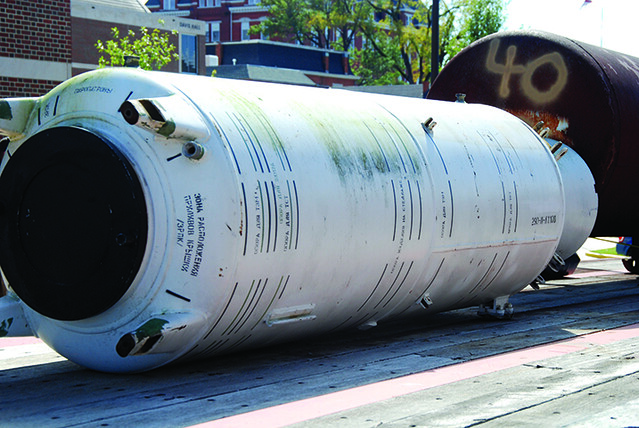A Russian missile has found a new home at Auburn University. The Department of Aerospace Engineering is the proud owner of a piece of military history, a Russian SA-2 Guideline Surface-to-Air Missile donated by the Defense Intelligence Agency’s Missile and Space Intelligence Center to support Auburn’s academic programs in electrical, mechanical and aerospace engineering.
The missile was delivered to campus disassembled and without its normal payload that includes a warhead and fuel. Students and faculty in aerospace engineering are working to reassemble the missile and display it outside Davis Hall. The SA-2 became recognized during the Cuban Missile Crisis and the Vietnam War for its ability to intercept and destroy enemy aircraft. Auburn’s missile has been studied extensively by the U.S. military and will be used to teach student engineers about missile design practices.
“We will section the missile to show the critical components of the propulsion system and use it as a teaching tool in propulsion classes,” said Roy Hartfield, Walt and Virginia Woltosz professor of aerospace engineering, who is working on a number of defense related projects and will lead Auburn engineers in studying the missile. “The unarmed missiles can be used for student research.”
The SA-2 is a high-altitude, command guided, surface-to-air missile. It is 35-feet long, only five feet shorter than an NFL goal post, and has a range of 28 miles and a maximum speed of Mach 3.5. The SA-2 was first deployed in 1957 and has since become the world’s most widely deployed air defense missile.
[miniflickr photoset_id=72157631953106500&sortby=date-posted-asc&per_page=50]
